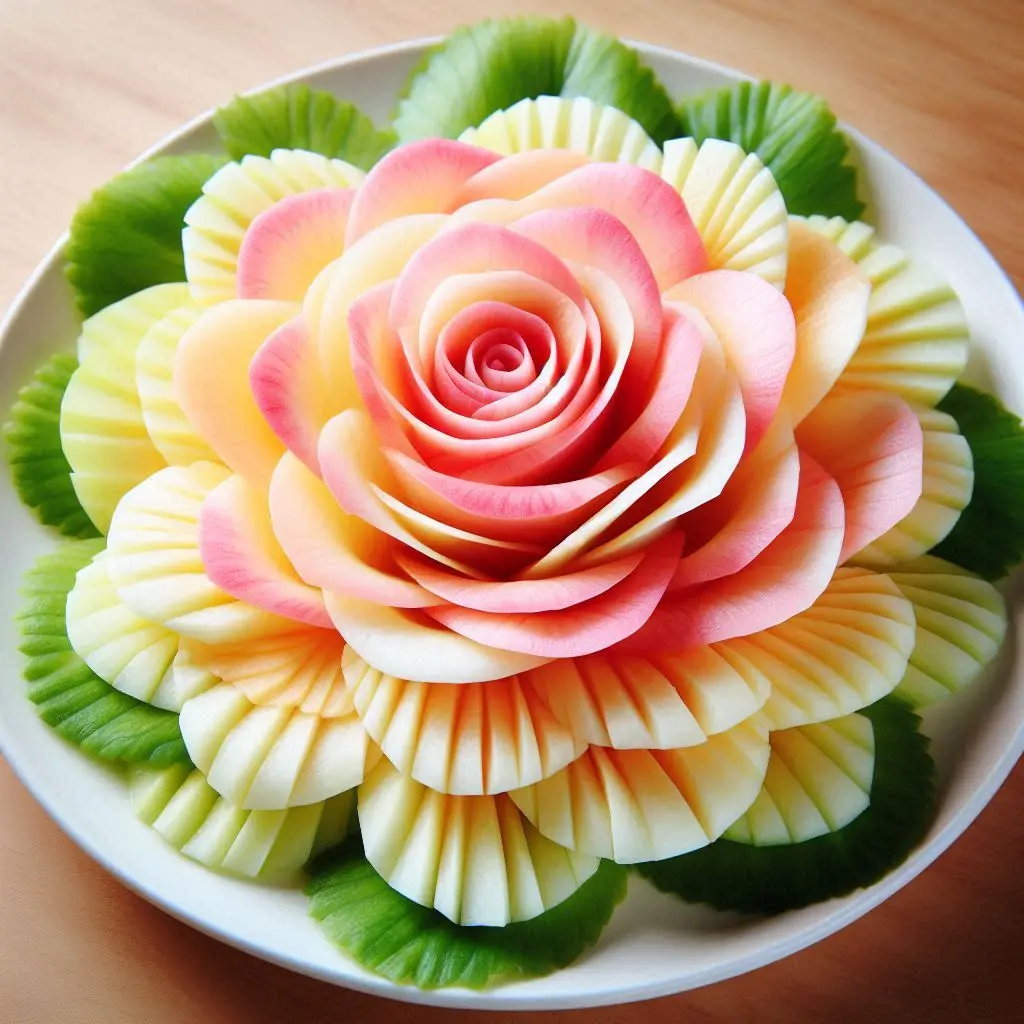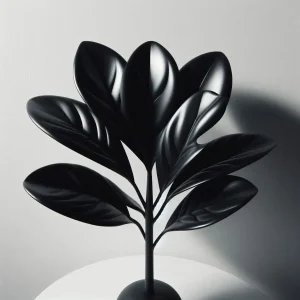Contrary to what most of us think, the history of using edible flowers dates back centuries. In fact, the origins of using these flavorful enhancers can be traced to ancient Rome, followed by China, the Middle East, and India. During the Victorian era and Queen Victoria’s reign, the use of these flowers for culinary elegance and grandeur became highly prevalent. From that period onwards, using fresh flowers (mostly flower petals) to adorn important meals became a tradition, adding a unique beauty to the dishes.
| Flower | Scientific Name | Common Uses |
| Damask Rose | Rosa damascena | Culinary applications, making rose water, dessert decoration |
| Chamomile | Matricaria chamomilla | Soothing tea for digestive issues, reducing anxiety, headache relief |
| Squash Blossoms | – | Pickled or used in salads, soups, or stuffed and fried dishes |
| Lavender | Lavandula angustifolia | Remedies for depression, stress, sleep aid, headache relief |
| Viper’s-buglosses | – | Treatment for colds, nerve soothing, vitamin C source |
| Carnation | Dianthus caryophyllus | Decorative in jellies, cakes, chocolates, sweet and colorful addition |
| Hollyhocks | Alcea | Herbal remedy for diabetes, cancer, gum inflammation, fever, sore throat |
| Honeysuckle | Lonicera | Diabetes treatment, arthritis relief, cold and infection remedy |
| Sweet Woodruff | Galium odoratum | Wound healing, kidney stone prevention, migraine relief, liver support |
| Violet | Viola | Unique flavor in jellies, layered cakes, wedding cake decorations |
| Nasturtium | Tropaeolum | Flavoring omelets, soups, or salads, adding a peppery taste |
| Pot marigold | Calendula officinalis | Culinary uses in herb butters, soups, omelets, and rice for color |
This usage has gained such value and popularity that now we utilize dried flowers to avoid being flowerless in the cold and bloomless seasons.
Damask Rose (Gol-e-Mohammadi):
Page Contents
ToggleMohammadi, a type of rose, is used to make rosewater and is easily found in large cities due to its resistance to water scarcity. This flower has a warm temperament and is used for strengthening hair, weight loss, skin clarity, liver, and kidney cleansing. Additionally, dried Damask rose petals are used to combat and treat depression.
Dandelion is a perennial plant that grows abundantly in various climates. The dandelion flower is used for boosting the immune system, reducing cholesterol, lowering blood sugar, acting as an anti-infective, and strengthening the stomach.
It’s interesting to note that in Iran, there are two types of flowers in this category, the first being “Gol Gavzaban” and the second being “Gav Zaban.” In colloquial terms, both are mistakenly referred to as “Gol Gavzaban.” This mistake is entirely understandable since the difference between these two is very subtle, involving size, color, and some medicinal properties. This herbal tea is used for treating colds, calming nerves, providing vitamin C to the body, improving sensory disorders, and more. By adding lemon, it can be transformed into a tea with a different color and additional benefits.
From a scientific perspective, the only species of chamomile with proven medicinal properties are German chamomile and Roman chamomile. The pleasant infusion of this plant is used for purposes such as improving stomach discomfort, reducing anxiety, promoting restful sleep, and treating headaches.
Some varieties of lavender are cultivated solely for decorative purposes, while others are grown for culinary use. The most common type is English lavender, which is cultivated worldwide. If you experience issues such as depression, stress, irregular sleep, recurring pains, dizziness, and general body fatigue, lavender tea may be beneficial for you.
Hollyhocks possess entirely medicinal properties. Even the flowers of hollyhocks are used to prepare tablet coatings, and their taste is quite similar to bitter tea. The herbal tea made from this plant is widely used for conditions such as diabetes, cancer, gum inflammation, treating fever, and soothing sore throat.
Most of us are familiar with the honeysuckle flower, also known as “Pich-e-Amin al-Dowleh,” and its sweet nectar. Honeysuckle is a very resilient and prolific plant. The fragrant herbal tea made from honeysuckle flowers is widely used for treating diabetes, arthritis, colds, viruses, and bacterial infections. Due to its sweetness, honeysuckle is also used as a natural sugar substitute.
Sweet Woodruff is a herbaceous plant found mainly in Europe and Mediterranean regions. Its petal tissues are very soft and delicate, with a sweet and vanilla-like taste. This herbal infusion is beneficial for improving wounds, expelling kidney stones, alleviating migraine headaches, and addressing liver disorders. However, it’s important to note that, like any other herbal tea, excessive consumption may not only be ineffective but could also have adverse effects.
If the taste of these infusions is somewhat bitter for you, you can make them more enjoyable by adding a little honey or mint. Additionally, once these herbal teas have cooled, you can use them as refreshing summer syrups. With a bit of creativity and the addition of ice cubes containing flowers, you can have the best syrups.
read more: Tips for plants in spring
Food and Salads:
Using these health-promoting flowers as spices or condiments is very enjoyable. They can be used in various forms, such as dried, powdered, fresh, or soaked in various oils (such as olive oil or sesame oil), for decoration or flavoring. The most common ones include:
Chrysanthemum Flowers:

Chrysanthemum flowers are mostly found in Asian countries with a wide variety. These flowers have a sweet and fresh taste, adding a hint of greens to soups and bread. They are also used to flavor vinegar.
Nasturtium, an annual herb, grows rapidly and is known for its peppery flavor. Most parts of this plant have a spicy taste, often referred to as Indian cress. The mature(cooked forms of this)flowers are used in various omelets and soups, while the raw ones add a peppery kick to salads.
Pot marigold, also known as calendula, is a plant with a beautiful appearance and leaves covered in fine hairs. Unlike chrysanthemums, the flowers of this plant have a bitter, tangy, and spicy taste. In addition to its unique flavor, the color of this flower is also eye-catching. Due to its vibrant color, some consider it a cost-effective alternative to saffron. Pot marigold is used as a seasoning in vegetable butters and soups, paired with eggs (in omelets and frittatas), and for a more beautiful color in pasta and rice dishes when cooking them.
As mentioned earlier, the culinary(edible) lavender variety is different from the decorative one, although the culinary(edible) lavender can also be used for decoration. culinary(edible) lavender is used to impart a fragrant aroma to fish when grilling. Additionally, it is added to pasta sauces to give them a unique scent and flavor.
Primrose is a sun-loving plant that thrives in well-enriched soil. It is sensitive and requires specific conditions for growth, making it suitable for sunny areas. The flavor of this herb is sweet and pleasant. The raw petals are used to prepare pickles, and the steamed blossoms are used in yogurt to make Primrose Borani, a traditional dish.
Some squash blossoms, rich in various vitamins, do not transform into fruit. To utilize these blossoms, they are often pickled or turned into preserves. Apart from using them raw in salads, they are also cooked or fried and used in dishes like stuffed squash blossoms, adding a delightful crunch.
Dessert
At first, we mentioned that most of us use flowers only for decorating our homes or workplaces or as gifts. However, in this section, we will discuss how to use edible flowers in a way that you may not have considered before!
If you want to be one step ahead in making desserts, you should know that cooking skills alone are not enough! Incorporating natural ingredients in the final stages of dessert preparation is the best way to complement and perfect your efforts, and what natural substance is more beautiful than flowers?
Using edible flowers for jellies, cakes, and pastries adds beauty and flavor to them. The flowers used can be selected from the following list of commonly used edible flowers:
Rose Flowers:

The use of rose flowers in meals has a long history, dating back to the time of the Egyptians, and it has become popular among Iranians. Rose petal jam and rose caramel are used to make various sweets and to have beautiful writing on cakes. Moreover, using an adequate amount of these flowers can turn a simple cake into a piece of art. If you are someone who pays special attention to the beauty of your desserts, you can also turn your ice cream into a rare delicacy by garnishing it with a few rosebuds. Remember to remove the white part of the petals that has a bitter taste when using them.
Dandelion, belonging to the sunflower family, is widely used in pastry making due to its unique beauty and sweetness. It’s essential to note that when in the bud stage, the dandelion flower has a sweet and honey-like taste, but as it matures into a flower, it becomes bitter. Therefore, dandelion buds are commonly used for making jams, decorating cakes, and infusing jellies.
The flavor of violet flowers, belonging to the mint family, is distinctive, being both sharp and cool. Violet flower jam has a unique taste when used between layers of cakes and pastries, adding a special touch to the decorations on wedding and birthday cakes.
Carnation flowers have sweet and colorful petals. Due to their taste and beauty, they are used to decorate gelatin inside molds or on top of it, adorn special cakes, and embellish chocolate bars.
Can all flowers be eaten?
No, some flowers contain toxins, and you should ensure their non-toxicity before consuming them. On the other hand, most flowers available in the market are treated with pesticides and lack organic conditions, making them unsuitable for consumption.
Which is the most consumed edible flower?
The most common and widely consumed edible flowers include:
– Damask rose
– Chamomile
– Squash Blossoms
– Lavender
– Viper’s-buglosses
– Carnation
What are the uses of edible flowers?
Edible flowers can be used for cooking, various salads, dessert decorations, making beverages, and in some dishes and medicinal purposes.
Get to know nasturtium from the treehugger site:
One of the most popular edible flowers, nasturtium blossoms are brilliantly colored with a sweet, floral flavor bursting with a spicy pepper finish. When the flowers go to seed, the seed pod is a marvel of sweet and spicy. You can stuff flowers, add leaves to salads, pickle buds like capers, and garnish to your heart’s content.
In conclusion,
As we have discovered, edible flowers are available everywhere and at all times. Fresh flowers are easily found in spring and summer, while dried petals can be found in fall and winter. Understanding the types of edible plants and using them appropriately and in moderation is a noteworthy point to consider.







